Members
 |
Central Engineering Consultancy Bureau (CECB)Colombo |
| Outline The Natural Resources Management and Laboratory Services (NRM&LS), is an AGM unit of the Central Engineering Consultancy Bureau (CECB) functioned under the Ministry of Mahaweli Development & Environment, Sri Lanka. Finding the utmost importance of preserving the environment while catering the construction sector, CECB has taken the initiative of establishing the NRM&LS, to fulfill the construction and industry related environmental issues in accordance to the government regulations. Stating with the Moragahakanda Hydro Power Project in year 2000, today NRM&LS is engaged with a wide variety of Environmental Impact Assessments, Disaster Risk Assessments, Environmental Management Plan and Social Safeguard Studies both locally and internationally. Some of the major projects include Conflict Affected Region Emergency (CARE) Project conducted in Nothern Province in Sri Lanka, range of Irrigation Projects, Water Supply Projects, Mini Hydro power projects, Port City Development Project, Waste to energy development project which has a national significance and internationally for many Hydro Power projects and Social and Environmental Assessment such as the Nyamwamba Small Hydro Power Project ,Uganda which our commitment and dedication is highly involved. The CECB laboratory services of NRM&LS comprises an advanced laboratory spectrum providing a range of sample testing including the Chemical and Environmental Laboratory, Advanced Concrete Testing Laboratory, Advanced Soil Testing Laboratory, Geotechnical Investigations and foundation excavation. Theses laboratories are well-equipped with the advanced instruments and latest technology network in which highly trained professionals involved in carrying out diversified testing methods and research projects to furnish the best solutions for around 2000 clientele. At present, NRM&LS has its major involvements in the Mega City Development Projects conducted under the Government of Sri Lanka which concerns on Disaster Risk Management such as Floods, Droughts and Landslides. Our ultimate goal is to achieve sustainable development of the society through strong commitment in delivering engineering services entangled with public-private partnerships in the global industry. [detail] --> |
|
 |
National Building Research Organizatio (NBRO)Colombo |
| Outline National Building Research Organisation (NBRO) the premier research & development institute established in 1984 has now grown in to a successful technical service provider and research & development institution where experts from multiple disciplines have teamed up and dedicated to create a disaster free built environment for the nation. With the expansion of housing construction activities, particularly in the rural sector, the need for research and development into materials and technology locally available was felt. In order to provide this service centrally, the National Building Research Organization (NBRO) was established under the Ministry of Local Government, Housing and Construction in March 1984 by the merger of former Building Research Institute (BRI) of the State Engineering Corporation and the Soil testing Laboratory of the Department of Buildings. In May 1988, the NBRO was brought under the Urban Development Authority (UDA), by a Cabinet decision. The activities of the NBRO expanded considerably and covered the areas of Human Settlements Development, Environmental Development and Structural Engineering Research and Project Management. Research and Development work on disaster mitigation related to landslides was also planned and carried out from 1988 onwards. Thus research and development activities of the total shelter sector were undertaken by the NBRO. |
|
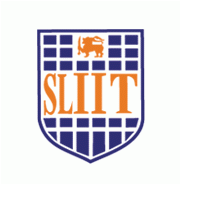 |
Sri Lanka Institute of Information Technology (SLIIT)Colombo |
| Outline SLIIT was established in 1999. We opened our doors to 400 students in Metro Campus in Colombo. Currently, we offer both undergraduate and postgraduate courses and accommodate over 7000 students, including international students from various regions in the world. More than 9000 alumni have graduated from our three faculties: Business, Computer, and Engineering. We take great pride in producing graduates who make meaningful contributions to their communities and professions. Among our diversely qualified graduates, alumni are software engineers, engineers, business analysts and noted entrepreneurs. |
|
 |
UNESCO Chair in Water ResourcesKhartoum |
| Outline UNESCO Chair in Water Resources (246), established in 1994 at Omdurman Islamic University (Sudan).
[detail] --> |
|
 |
Global Risk Forum GRF DavosDavos Platz |
|
Outline As the chairman and the organiser of the first IDRC Davos 2006, Walter J. Ammann implemented this request by founding the Global Risk Forum GRF Davos as the institutional framework. GRF Davos is since 2008 the organiser of the IDRC Davos conferences and promotes the worldwide exchange of know-how and expertise, creates solutions and fosters good practices in integrative risk management and climate change adaptation. GRF Davos aims through research, implementation, advocacy and networking activities at serving as a Centre of Excellence in knowledge and know-how exchange for the application of timely and appropriate risk management strategies, tools and practical solutions. GRF Davos is the publisher of two international electronic journals, namely Planet@Risk and the International Journal for Disaster Risk Reduction together with the publisher Elsevier. Research Achievements and Challenges: We aim to improve the understanding, assessment and management of risks and disasters affecting human safety, security, health, the environment, critical infrastructures, the economy and society at large. Our inside expertise, coupled with the experience and knowledge of our global network of engineers, consultants, and scientists, enable us to deliver projects in various domains. We provide services and do research in monitoring processes, risk analysis and provide solutions for the implementation of measures. We intervene in each phase of the disaster risk reduction cycle (prevention, intervention, recovery) with local and international projects contributing to lower collateral and human losses and a safer world. Our research focuses on: - Integrative Disaster Risk Management processes - Resilience - Vulnerability - Natural Hazards - Climate Change Adaptation and Mitigation - Business Continuity - Sustainable Development - Capacity Building, awareness raising Our main goals are:
To provide and manage a network for decision-makers, practitioners and experts from politics, government, IGOs, business, science, NGOs, media and the public [detail] --> |
|
 |
Institute of Earth Sciences, Faculty of Geosciences, University of LausanneLausanne |
| Outline The environment and its relations with society are at the heart of research and teaching in the Faculty of Geosciences and Environment. This broad subject area is examined through a disciplinary approach (geology, geography) and an interdisciplinary approach (environmental sciences) at the interface of natural, human and social sciences. Teachers-researchers at the Institute of Earth Sciences and the Institute of Earth Surface Dynamics analyse and model historic and recent processes testifying to physical, chemical and biological changes on our planet linked to natural and anthropogenic factors. Teachers-researchers at the Institute of Geography and Durability are interested in the organisation of space, ecological thought, relations between society and the environment, and the sustainability of our ways of life. Taking into account the complexity, plurality and diversity of geo-environmental challenges, educational programmes at the Faculty of Geosciences and Environment are based on fundamental sciences (mathematics, natural sciences, and human and social sciences) and their reconfiguration, combination and application in the real world. In addition, they find expression in different terrains, including Alpine and urban environments, not only in Switzerland, but also in Europe and elsewhere. After completing a core programme of multidisciplinary courses, students in geosciences and environment can specialise in a number of disciplinary and interdisciplinary fields. [detail] --> |
|
 |
Risk and Crisis Research Centre
|
| Outline Risk and Crisis Research Centre (RCR) develops and communicates knowledge about risk, crisis and security. RCR gathers researchers from nine different disciplines. The centre's activities include research, education and collaboration. Through RCR, you have a unique opportunity to access research results on how risk is perceived and assessed and how crises are managed, all for the benefit of soci [detail] --> |
|
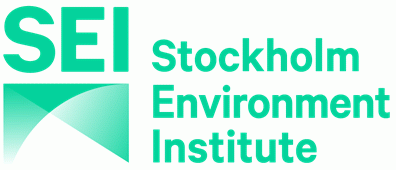 |
Stockholm Environment Institute (SEI)Stockholm |
| Outline The Stockholm Environment Institute is an international non-profit research and policy organization that tackles environment and development challenges. We connect science and decision-making to develop solutions for a sustainable future for all. Formally established in 1989 by the Swedish Government, it has built a reputation for rigorous and objective scientific analysis in the field of environment and development. SEI is:
SEI operates through its eight centres around the world in Sweden, the UK, the US, Thailand, Kenya, Estonia and Colombia. Our work spans from climate, water, air, and land-use issues, and integrates evidence and perspectives on governance, to the economy, gender and human health. SEI's approach is highly collaborative: stakeholder involvement is at the heart of our efforts to build capacity, strengthen institutions and equip partners for the long term. We make sure our knowledge and findings are clearly communicated and accessible to decision-makers and civil-society. We publish our own open access material in leading academic journals and repackage our research to offer effective decision support. To promote debate and share knowledge we convene decision-makers, academics and practitioners, and engage with policy processes, development action and business practice throughout the world. We are committed to transparency and believe that full disclosure of our finances and funding builds trust in our work. The Swedish International Development Cooperation Agency (Sida) is our largest single donor, but we also receive broad support from other development agencies, governments, NGOs, universities, businesses, and financial institutions. More specifically concerning disaster risk reduction, our recent work has been focusing on transforming the relationship between development and disaster risks, as well as integrating the global agendas on SDGs, Climate and the SFDRR. [detail] --> |
|
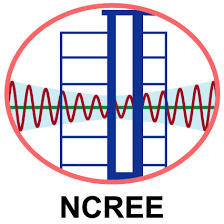 |
National Center for Research on Earthquake Engineering (NCREE)
|
| Outline The National Center for Research on Earthquake Engineering (NCREE) was established in October 1990. Its laboratory, equipped with a tri-axial shaking table, an L-shape reaction wall system, and a large strong floor test bed allows earthquake engineering simulations of structural components or systems in full-scale. Missions
[detail] --> |
|
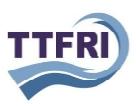 |
Taiwan Typhoon and Flood Research Institute (TTFRI)
|
| Outline The Taiwan Typhoon and Flood Research Institute (TTFRI) was established in 2011. Besides serving as an information-sharing platform to support academic research, TTFRI develops advanced prediction techniques of typhoon and flood to assist government agencies in disaster prevention, to mitigate the social and economic impacts of typhoon/flood-related disasters. Meanwhile, TTFRI focuses on typhoon and floodrelated researches with regional characteristics and also devotes itself to nurturing talents for future worldleading researchers. Missions
[detail] --> |
|
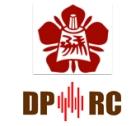 |
Disaster Prevention Research Center (DPRC)
|
| Outline On July 31, 1996 , Typhoon Herb brought a tremendous rain and caused severe floods and sediment-related disasters especially debris flow disaster along the Chen-Yo-Lan river, the disaster prevention becomes a focal point as well as common needs of society. Established in October, 1996, the Disaster Prevention Research Center (DPRC) of National Cheng Kung University (NCKU) is a part of the University's General Center in research, as well as one of the main institutions for disaster prevention and mitigation in Taiwan. DPRC is established with the purpose of improving the technology and countermeasures of disaster prevention, and also study a suitable technical code for disaster prevention and rescue with specialists and researchers. The main missions are as following:
|
|
 |
Tainan Hydraulics Laboratory (THL)
|
| Outline In the light of the nationwide contribution of hydraulic engineering, THL aims to focus on using the educational cooperative support system to resolve engineering problems. In the early days, THL endeavored in the research of harbor and marine construction and today its contribution has gained an international reputation. The succeeding mission of THL is: 1.) Investigation, experiment, and analysis in the area of hydraulic and marine engineering; 2.) Research on national economic development and planning; 3.) Compiling and supervising projects for Water Resource Agency, Ministry of Economic Affairs; 4.) Creating hydraulic and marine database as well as Geographic Information System (GIS). 5.) Assisting interdisciplinary instruction, research, and practical training in order to make industries, officials, and academics into a whole and thus to achieve the terminal goal, globalization. [detail] --> |
|
 |
National Science and Technology Center for Disaster Reduction (NCDR)New Taipei City |
| Outline Taiwan has beautiful natural environments, but it has a unique geographic location. It is situated in the subtropical monsoon region. There are plum rains every May~June and typhoons every July 7~October. This special type of climate often brings about torrential rains. Also, the steep landform and short river connections often cause serious flooding. Meanwhile, since it is located at the border of the Eurasian Plate and the Philippine Sea Plate, it is considered one of the regions in the world with the most frequent felt earthquakes. Therefore, the frequent occurrences of natural disasters often result to serious damage and loss of lives and properties. The society often shows much concern toward disaster related problems. The government and the private sector also engage in disaster prevention and response works. However, due to rapid economic developments and social changes, disaster prevention works are less than adequate at present. In recent years, improved standards of living have resulted to higher demands for the protection of lives and properties. The government also finds it essential to promptly formulate effective disaster prevention and response strategies, strengthen disaster prevention technology research results and implement them in disaster prevention operations. [detail] --> |
|
 |
Center for Weather Climate and Disaster Research (WCDR)
|
Outline
[detail] --> |
|
Philippines - Philippine Society of Emergency Medical Technicians
 |
Philippine Society of Emergency Medical TechniciansQuezon City |
|
Outline The Philippine of Society of Emergency Medical Technicians (PSEMT) is a non-profit, non-political, non-union body which is dedicated to the cause of pushing for the introduction of an effective National Ambulance System for all citizens of the Philippines, irrespective of social status, cultural background, religious beliefs or political affiliations. We will work unreservedly with National, Regional and local government units in order to achieve optimum levels of care for each and every Filipino who are victim to sudden serious illness or trauma, especially during the many disaster situations that occur due to natural or man-made causes. The PSEMT carries out specific training and development in Pre-Hospital Disaster Response and works closely in conjunction the Government of the Philippines and other concerned non-government agencies in developing and improving strategies and guidelines for medical response during disaster situations. A great many of our members are currently employed in key positions with the "National Disaster Risk Reduction and Management Council (NDRRMC) throughout the country and are making invaluable contributions through their efforts [detail] --> |
|
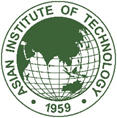 |
Asian Institute of Technology (AIT)
Bangkok |
| Outline The Asian Institute of Technology promotes technological change and sustainable development in the Asian-Pacific region through higher education, research and outreach. Established in Bangkok in 1959, AIT has become a leading regional postgraduate institution and is actively working with public and private sector partners throughout the region and with some of the top universities in the world. AIT's Mission is: To develop highly qualified and committed professionals who play leading roles in the region's sustainable development and its integration into the global economy. Disaster Preparedness, Mitigation and Management (DPMM) at Asian Institute of Technology (AIT) uses interdisciplinary capacities (engineering, medicine, natural and social science, as well as management) to manage and minimize the effects of disasters in people on the front lines of disaster response and preparedness. It provides professional education and short term training for the capacity building of the Asia-Pacific as well as neighboring regions. AIT's contribution towards disaster research is multi-faceted, starting from Disaster Education, Capacity development, Training, engineering and social solution for disaster risk reduction. Non-availability of the scholarships and fund supports to the students from south Asian countries are found to be major challenge to create a large pool of students on disaster research. Exploring the possible funding sources for student from various govt. department will be advantageous to create a sizable human resource, which can influence the development planning and help to build resilient community. [detail] --> |
|
 |
Disaster and Risk Management Information Systems
|
| Outline Nowadays, many problems with natural disasters happen around the world. |
|
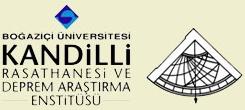 |
Kandilli Observatory and Earthquake Research Institute
|
| Outline In the frame of the 2010 Turkish-Japanese Year celebration in Turkey, a workshop on Earthquake Tsunami Early Warning Applications will be held at Kandilli Observatory Campus, Istanbul 5th October 2010, under the sponsorship of the Japanese General Consulate of Istanbul, Turkish Catastrophe Insurance Pool (TCIP) and Turkcell GSM Company. Technological advances in seismic instrumentation and telecommunication permit the implementation of real-time rapid response and early warning systems. During large earthquakes, such systems are capable of providing from a few seconds to a few tens of seconds of warning before the arrival of strong ground shaking and enable quick reports about the damage estimates to determine where emergency response is most needed. An earthquake early warning and rapid response system can provide the critical information needed to minimize loss of lives and property, and to direct rescue operations. [detail] --> |
|
 |
Disaster Management Centre
|
| Outline Bournemouth University Disaster Management Centre (BUDMC) is a leading national and international centre on crisis and disaster management in the UK, and a fully designated Research, Knowledge and Enterprise (RKE) centre of Bournemouth University. Established since 2001, the Centre has secured an international reputation for its work in research informed (R) knowledge (K), enterprise and professional practice delivery (E), with a particular international renown for excellence for 'in country' knowledge transfer. The Centre's has achieved major success in securing research informed professional practice contracts in Oman, Ghana, Nepal, Turkey, Sierra Leone, Croatia, Sri Lanka and Nigeria, complemented by UK contracts that are regularly delivered to the Foreign and Commonwealth Office, and also include innovative market operations with the UK Independent School sector. The Centre also works closely with the private sector both in the UK and abroad. [detail] --> |
|







